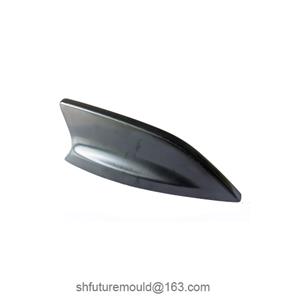Cooling and Demolding in High-Transparency Plastic Injection Molding
High-transparency plastics (such as PC, PMMA, PSU, etc.) require meticulous attention during the cooling and demolding stages of the injection molding process. Optimizing these stages significantly improves product transparency and surface quality.
Cooling Stage
The cooling process directly affects the internal stress distribution, surface smoothness, and dimensional stability of the product.
Challenges in Cooling
Heat-Sensitive Materials: High-transparency plastics are typically heat-sensitive. Cooling too quickly can cause excessive internal stress while cooling too slowly may reduce production efficiency.
Temperature Difference Control: Uneven cooling can lead to warping, deformation, and a decline in optical performance.
Optimization Strategies
Mold Cooling Design:
Use uniformly distributed cooling channels to ensure consistent mold cavity temperature.
Add cooling circuits in critical areas or use high-conductivity materials (e.g., beryllium copper) to enhance heat transfer efficiency.
Cooling Medium Control:
Maintain cooling water temperatures within the appropriate range for the material to avoid surface stress or cracking caused by overly low temperatures.
Ensure stable water flow rates to prevent uneven cooling.
Extend Cooling Time:
Allow the product to cool fully to room temperature, improving dimensional accuracy and reducing residual stress.
Post-Cooling Treatment:
Annealing: For optical-grade products, apply annealing processes (e.g., maintaining 80°C–120°C for 2–3 hours) to release internal stress and enhance transparency and durability.
Demolding Stage
The demolding process can easily scratch or stress the product surface, affecting optical performance and appearance.
Challenges in Demolding
Mold Adherence: Transparent plastics have lower flowability, making them prone to sticking to the mold cavity surface.
Scratches and Deformation: Excessive demolding force or improper techniques can damage the product surface or cause deformation.
Optimization Strategies
Mold Surface Treatment:
Polish the mold cavity surface to a mirror finish to reduce friction.
Use appropriate mold release agents (e.g., high-performance silicone-based release agents) to prevent sticking.
Optimize Demolding Mechanisms:
Employ evenly distributed ejector pins or ejector plates to avoid localized stress concentration.
Design adequate draft angles (typically 1°–3°) to minimize demolding resistance.
Control Demolding Conditions:
Maintain a moderate mold temperature to prevent demolding difficulties caused by temperature differences.
Ensure the product has fully cooled to a rigid state before demolding.
Comprehensive Recommendations
Process Parameter Matching: Set appropriate cooling times and mold temperatures based on material properties to ensure dimensional stability and high transparency of the final product.
Automated Demolding: Introduce robotic arms or automated ejection systems to improve demolding precision and reduce manual damage.
Testing and Improvement: Continuously refine cooling and demolding processes through experimental optimization, recording parameters for future production.




